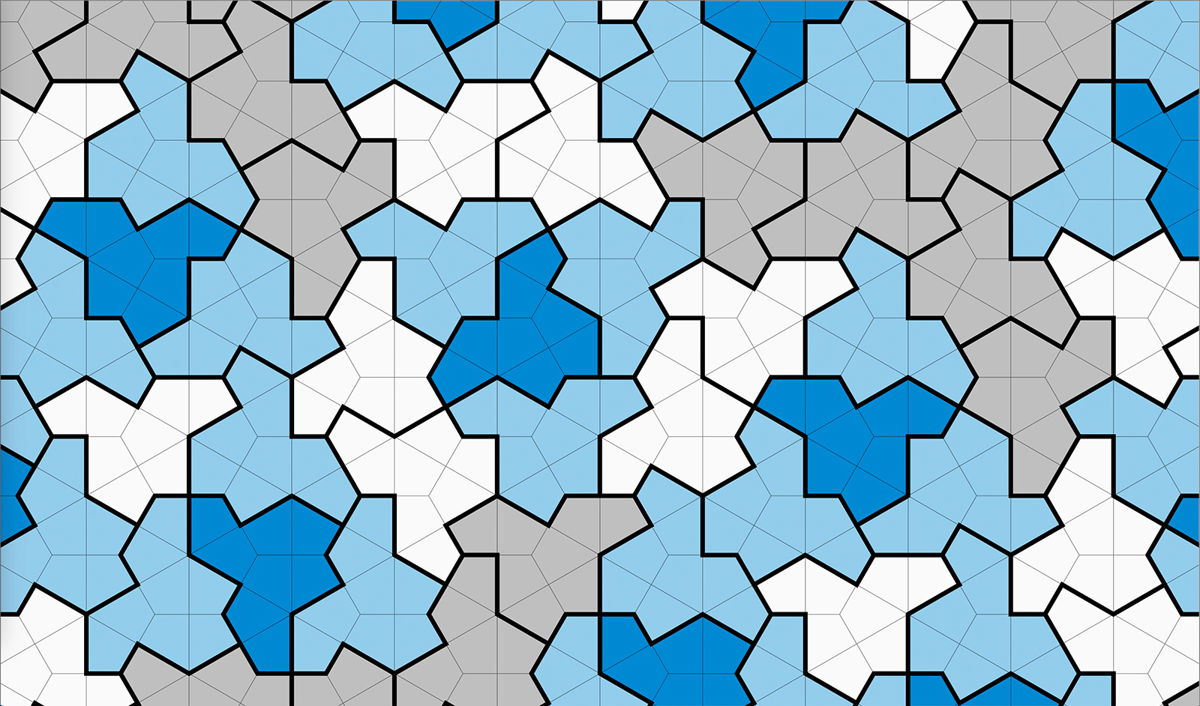Meet the cosmic rock stars headed for the moon

Mathematicians said they invented an "impossible" tile that never repeats.
By Katie Hunt, CNN
I was briefly transfixed by April’s full moon as it peeped out of London’s clouds on Wednesday night — it was a reminder of how the silvery orb shapes the course of life on Earth.
Medieval moon watchers were similarly captivated by our celestial neighbor, making detailed descriptions of lunar phases and phenomena that have proved unexpectedly useful to scientists trying to solve a volcanic mystery on Earth today.
The moon is also poised to inspire a future generation. This week, NASA and its international partners marked an exciting milestone as the Artemis program moved a step closer toward its goal to establish a long-term human presence on the lunar surface.
Defying gravity
Meet the first cosmic rock stars of a new era of lunar exploration.
NASA has revealed four astronauts who will lead the first crewed moon mission in more than half a century.
The team will begin training for the Artemis II lunar flyby, slated to launch in November 2024. The roughly 10-day journey may take the astronauts farther into space than any human has traveled.
The crew includes the first woman and person of color to be assigned to a lunar mission.
Trailblazers
Researchers at New York’s Rockefeller University have developed a virtual reality maze for lab mice.
For days, the mice were allowed to explore the maze — finding rooms that contained sugar water or deterrents such as a puff of air to the face.
Why go to all this effort? Scientists hoped to demystify how memories are stored, and what they uncovered surprised them.
The study team found that long-term memories took root in an area of the brain that hasn’t typically been associated with memory processing — the anterior thalamus.
The finding suggests the brain region should be a key area of study for researchers attempting to help patients with conditions such as Alzheimer’s disease who are able to recall old memories but may have trouble remembering new information.
Discoveries
A geometry problem that has been puzzling scientists for 60 years has likely been solved by an amateur mathematician who discovered a brand-new shape.
Called “The hat” because it vaguely resembles a fedora, the elusive 13-sided shape is an “einstein” (from the German “ein stein,” or “one stone”). That means the new form can completely cover a surface without ever creating a repeated pattern — something that had not yet been achieved with a single tile.
The shape is publicly available, even for 3D printing, and it’s not going to be copyrighted. But think twice before using it to tile your bathroom walls.
Other worlds
Strong radio signals detected 12 light-years away suggest that an exoplanet might have a magnetic field — and perhaps even an atmosphere.
Previously, researchers have identified magnetic fields on exoplanets similar to Jupiter, a gas giant. But YZ Ceti b is the best candidate spotted so far for a rocky Earth-size exoplanet with a magnetic field, according to a new study.
The discovery has astronomers excited because a magnetic field, which protects the atmosphere that shelters life on Earth, could point to a world that potentially could support life.
(And if you want to know why space has its own unit of measurement, check out science educator Bill Nye’s explanation of light-years.)
Fantastic creatures
Snakes don’t just slither across the ground. They can launch themselves through the air and even climb smooth surfaces. Now, for the first time, researchers have recorded a species that has a highly unusual mechanism for escaping danger.
The dwarf reed snake is small and nocturnal. It hides in leaf litter or under rocks or logs during the day and is found across Southeast Asia.
The diminutive creature deploys a gravity-defying cartwheel when threatened by predators such as birds and the striped coral snake.
This acrobatic behavior hasn’t been formally observed in any other species of snake or reptile, researchers said.
The wonder
Dive into these remarkable reads.
— An odd-looking fish swimming 5 miles beneath the waves of the Pacific Ocean is the deepest ever filmed.
— Eggs are a symbol of new life, but fossilized specimens also have lots to say about the past.
— See which animals make up “The New Big 5” in a stunning wildlife photography book.
— The James Webb Space Telescope captured a striking image of ice giant Uranus’ rings.
The-CNN-Wire
™ & © 2023 Cable News Network, Inc., a Warner Bros. Discovery Company. All rights reserved.
Like what you’ve read? Oh, but there’s more. Sign up here to receive in your inbox the next edition of Wonder Theory, brought to you by CNN Space and Science writers Ashley Strickland, Katie Hunt and Jackie Wattles. They find wonder in planets beyond our solar system and discoveries from the ancient world.
